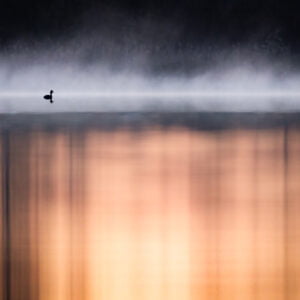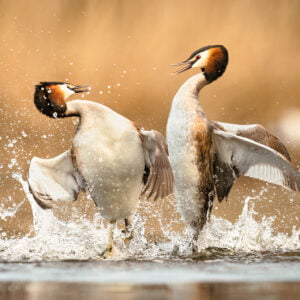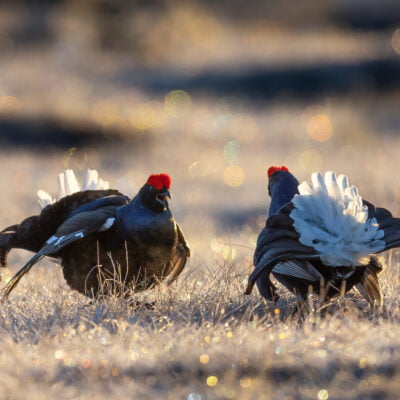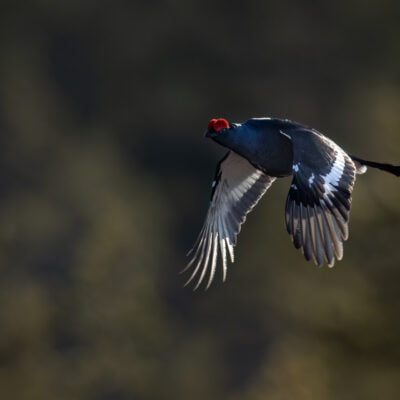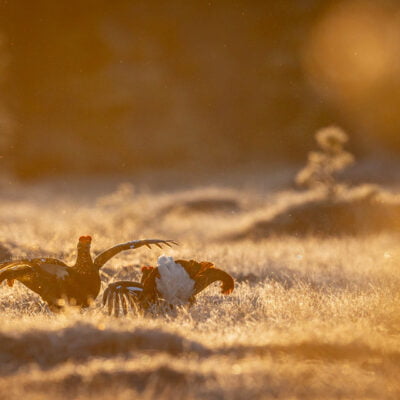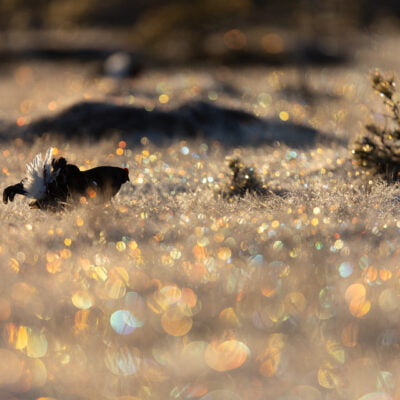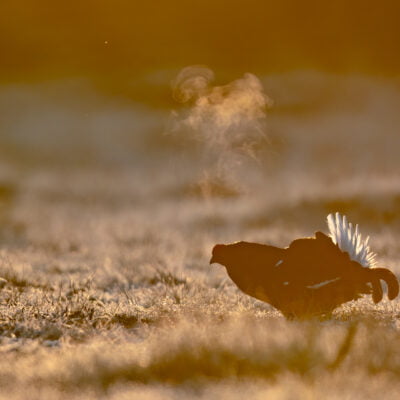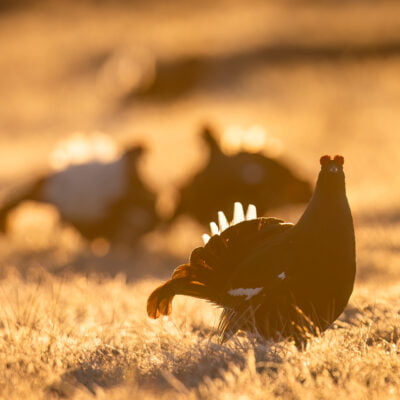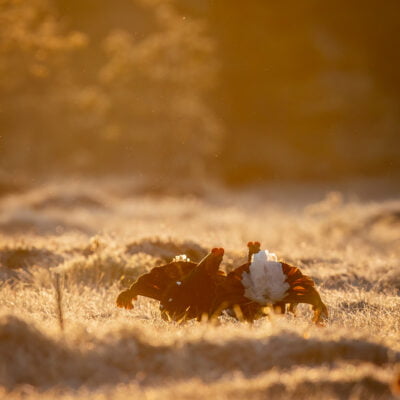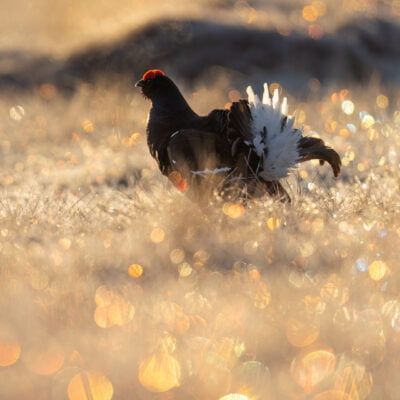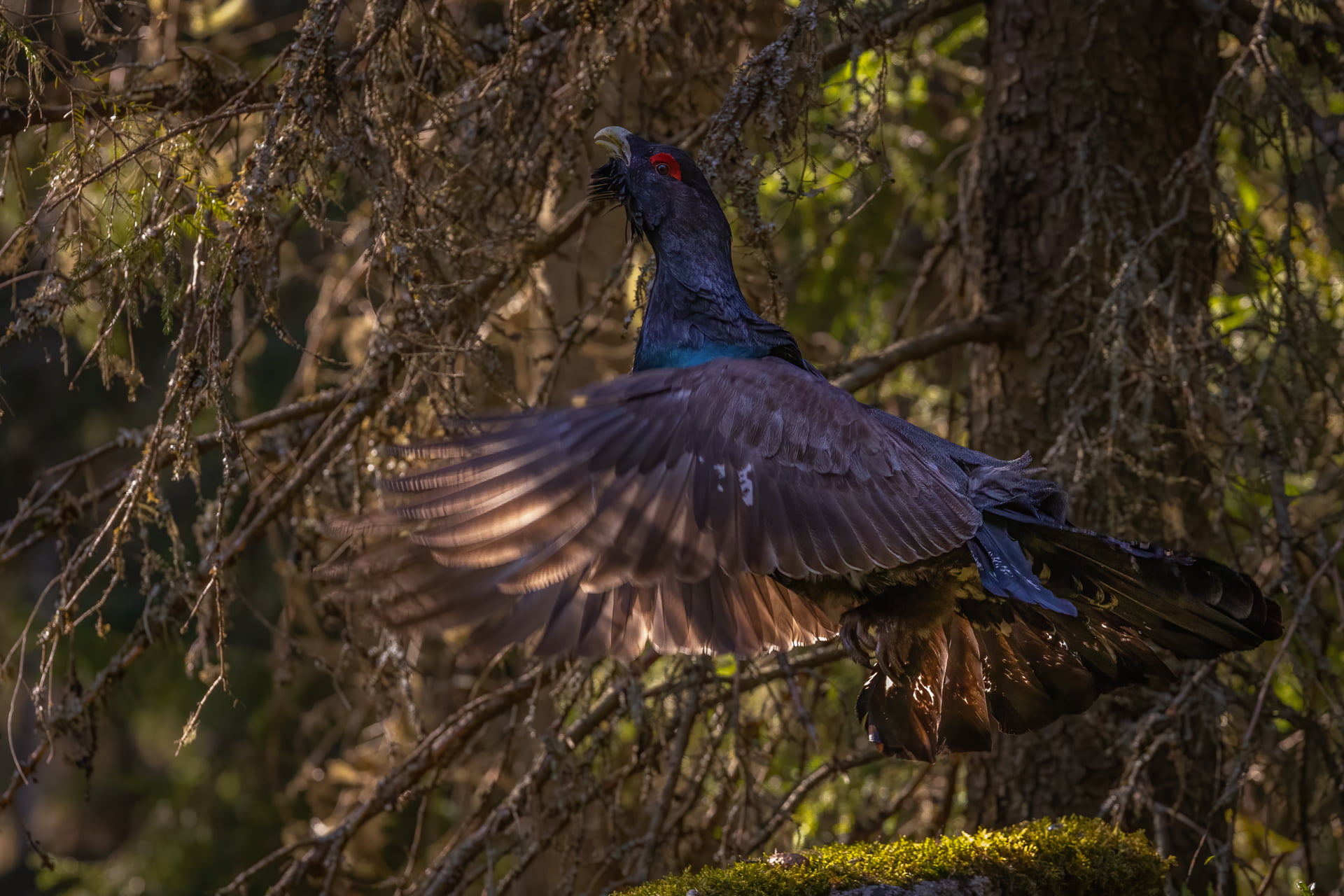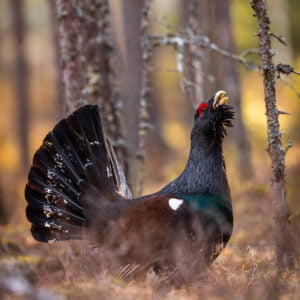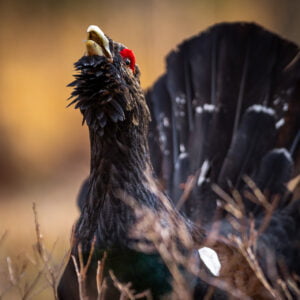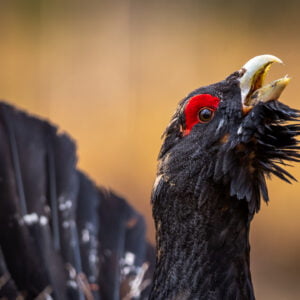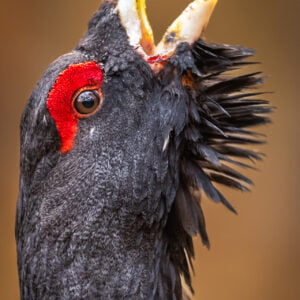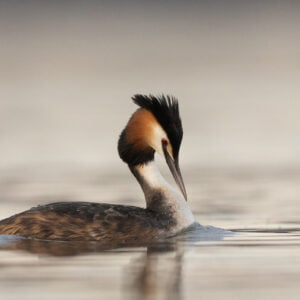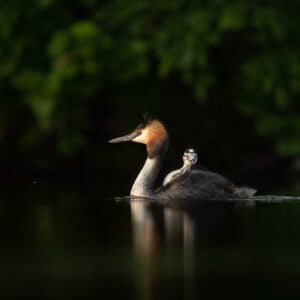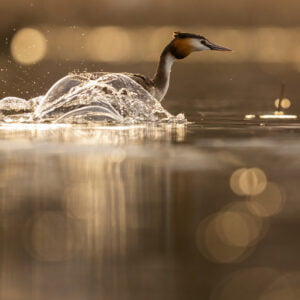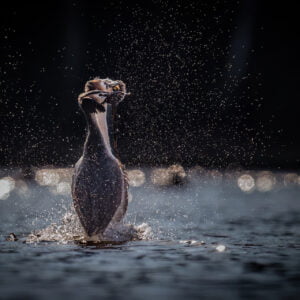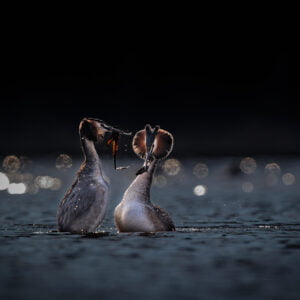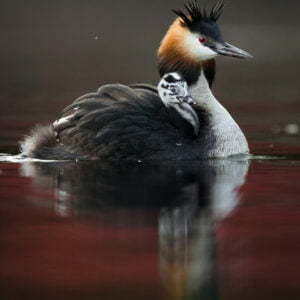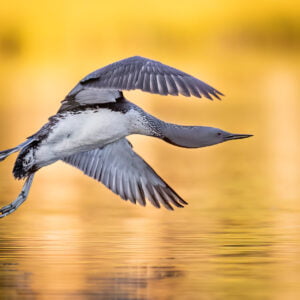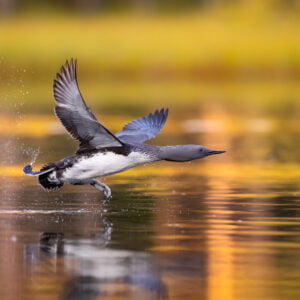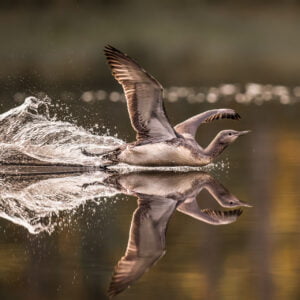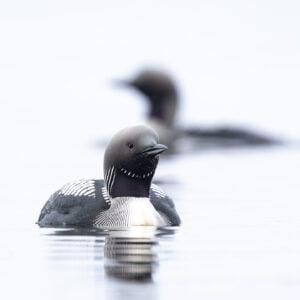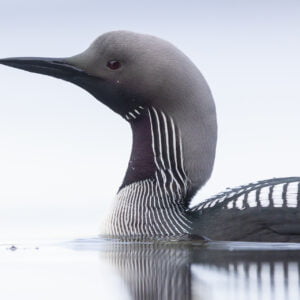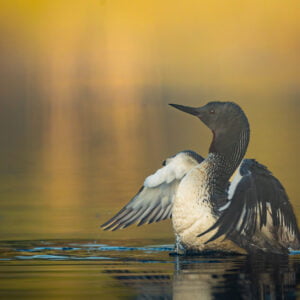Just one year ago, Finnish photographer Mia Surakka was still running a company that designs and manufactures dance and gymnastics competition wear. Her business was increasingly demanding, leaving little opportunity to photograph her beloved birds. ‘More and more, I felt that photography – especially bird photography – was what I wanted to do full-time. So last year, I decided to sell my company and follow my passion.’ Since then, Mia has arduously been tracking and photographing eagles, grouses, grebes and capercaillies, among other species. Her elegant and striking work has won several prizes. We are very proud that our gear has helped her further her passion and sat down for a talk, one month before her first solo exhibition.
Tracking and planning
Mia has been photographing since she got her first camera at age 9. “I was happy photographing whatever interested me. Later, I photographed a lot of dancers and athletes as I did the marketing for my company. As I got older, I started to hike more. And for some reason, I was always attracted to birds. When I finally bought long lenses, I just wanted to photograph them all the time. Since then, I have been very driven to get better.
Spring is a busy season, so I plan my photography carefully. I research where to find the birds, and learn about their behaviour, where they are, what they are doing, and when. Then, I explore where they could be, looking for a lek or places where they feed. I look for tracks and talk to the people living in the area; sometimes, they have seen the birds gather. And then, I plan and divide my time between different species and locations.
I try to create some spots for several species. I placed a pontoon for the black-throated divers, hoping they will nest. I have hung birdhouses for owls in some forest spots, and I have my own winter feeding place for Golden Eagles. I try to divide my time between the species, and base my planning on what they do, when and where. It takes a lot of preparation.”
Lekking of the grouses
Once widely spread in Western Europe, hunting, habitat loss and overgrazing have resulted in a decline in numbers and range of the Black Grouse. While most lowland populations of Western Europe went extinct (Denmark, NE France) or near extinct (Germany, The Netherlands, Belgium), they are still common in Finland. In the north, this impressive bird starts lekking end of March, in 3 specific spots. “They love fields, swamps, and ice covered lakes. I always find them in a field about 2 hours from my home.
But March is still very capricious. Spring starts, but snowstorms are not uncommon. Which I love, because then the setting will be beautiful in different ways. The males fight every morning before and during sunset for about four to six weeks, trying to determine the strongest. Then the females start coming to the trees to watch the show and decide who is the most handsome. At the end of the lekking season, they land, and the males chase the females, after which they mate. The strongest ones are the obvious winners, but many others just get lucky in the chase.”
She doesn’t mind the strenuous process. “I take my Mursu hide to the forest and set it up for a couple of days, covering it in branches and leaves. I leave it there for the birds to get used to it. Then when I start shooting, I will go to the tent the evening before and sleep there, so I can start shooting at first light. It’s rather lovely, even though it gets really dark and cold. I never have to use an alarm clock in the morning. The birds always wake me in time.
I bring two lenses for my Canon, a long lens and a smaller one. When waiting – a big part of the process – I use a good mattress in the tent and wear just about all the clothes I can.”
Capercaillies are much more difficult to photograph. While black grouses can be found in the same spot every year, with Capercaillies, the location of the mating depends on the conquering male. “The other males will go to his area, where the females will also be found”, Mia explains. “They first fight with each other in several areas, so only in the end, it becomes clear where the mating will be. I use game cameras to detect their presence. Some years I succeed, but other years the cameras are in the wrong areas, and I can’t find them.
I spend about seven nights with each species, depending on the weather. The birds are only really active when they can feel the spring.”
Courtship and chicks of the Great Crested Grebes
Great Crested Grebes are Mia’s favourite species. “They are numerous and easy to find in Finland. I know several places to photograph them and always use the Mr Jan Gear floating hide. It allows me to approach the birds very closely and really be among them. The water must be about waist-high, and the soil should not be too muddy, so you can easily walk and wade.
With ice still covering parts of the lakes around the end of April, mating season begins. The water is really freezing, but with the Mr Jan Gear dry suit, I can remain in the water for 3 hours. I don’t really notice the cold when I photograph and observe them; it only gets cold when there are no birds, and I have to wait and look for them.”
The elegant loons
The Black-throated Loon is an ancient aquatic bird mostly found in the northern hemisphere, primarily breeding in freshwater lakes in northern Europe and Asia. There is still ice on the lakes when they arrive in North-Finland at the end of March, and they always choose a small area where they come to feed. “This is a migrating species, elegant and beautiful in flight and up close”, says Mia. “But they are quite hard to photograph. Unfortunately, I have never witnessed their mating rituals because they perform them on big lakes, and I can never predict exactly where. I have built a floating pontoon and hope they will come to nest there, close to the shore. I really hope to photograph them while mating and nesting this or next year.
Red-throated Divers are easier to find as they nest in smaller ponds. I am careful not to disturb their nesting, so I only photograph them from July onwards. The chicks are growing, and parents feed them with fish that they go and catch in bigger lakes.”
Copyright: all images by Mia Surakka
Would you like to know more about floating hide photography? Download our free inspirational guide!

